CONTENT
SANRIKU INTERNATIONAL ARTS FESTIVAL MODEL TOUR REPORT
- 2022
- suggested-route
- Interact
- Experience
- Appreciation
Day 3: Sunday, September 11
Developing and Cultivating a Space Where Various Folk Performing Arts Inspire Each Other

If you visit the area on the weekend, there is a place you will definitely want to check out: the huge morning market, Tatehana Ganpeki Asaichi in Hachinohe City, Aomori Prefecture. It is held at the fishing port from sunrise to around 9 am on Sundays from March to December. This is one of the largest morning markets in Japan, extending to a total length of about 800 meters and packed with 300 vendors. Fresh seafood along with miscellaneous goods, antiques, nursing care products, and even trucks are sold there. In addition, the market holds live music performances and local pop idol stages drawing large crowds. Many people were eating at the food stalls, enjoying grilled squid, mackerel and scallops from Aomori, as well as Hachinohe’s dried fish and Senbei-jiru rice-cracker soup served at tables. They also enjoyed eating yakisoba and freshly baked bread while strolling around, and bought dried fruits and other goods from Tohoku as souvenirs.
At the Sanriku Future Geinoh Festival, held on the second day of the event, the performers took the stage at the Hirono Chomin Bunka Kaikan Cecilia Hall (main hall) in front of about 400 audience members (the seating capacity was reduced to half as a safety measure for COVID-19). The event featured five groups of young performers who are expected to lead the future of the folk performing arts, including two high school teams and three local groups from Hirono Town. During the event, there was also an exchange program where students from Kitakami Shonan High School shared the experience of their own folk performing arts with students from Iwaizumi High School. In his opening speech, Mr. Koiwa said, “When the Sanriku International Arts Festival began in 2014, I was surprised to learn that there were so many, and such different types of folk performing arts in the Sanriku region.” He decided to hold the event in Hirono Town this time because he had been impressed and inspired by the town and thought it was a good place to begin new initiatives. He stated, “I was moved by the blue sky and the blue sea, the white sandy beaches, and the various new initiatives being carried out in the region. I thought it would be a good idea to hold an event in the festival centered around young people since they are actively engaged in the training.” His vision became a reality, and the program lineup gave people a feeling of the future.
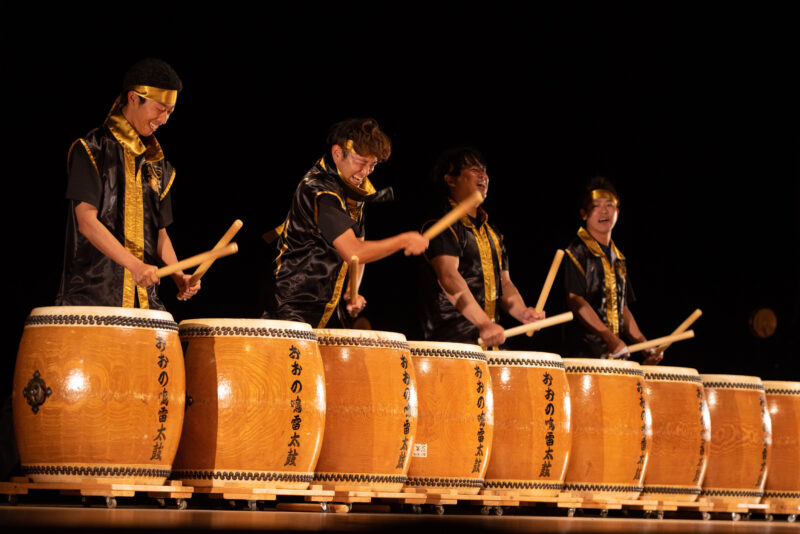
The first performance was by the creative taiko drumming team Ono Naruikazuchi Taiko, which immediately drew in the audience with their powerful performance. The group was made up of young people who took a course in creative taiko drumming in 2000 and has now grown to 28 members ranging in age from 5 to 46. The name Naruikazuchi comes from the Naruikazuchi Shrine in Ono, Hirono Town (formerly Ono Village), and represents their wish to become a taiko drumming group that represents the region and is loved by the villagers. The group received composition and performance lessons from the theater company Warabi-za from Akita Prefecture and put on strong, clear and passionate performances. Frustrated from not being able to practice much due to the coronavirus, the performers expressed their excitement to perform on stage, saying “When COVID-19 settles down, we want to perform with everyone here again.” Their drumming was infused with their determination and shook the audience.
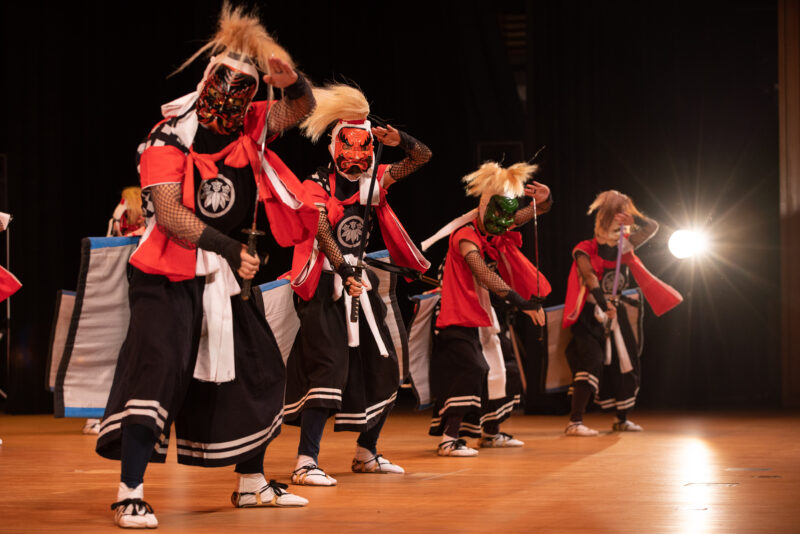
The second performance was the Onikenbai(Demon Sword Dance) by the Onikenbai Club from Kitakami Shonan High School. This is a highly skilled team that has won one Minister of Education, Culture, Sports, Science and Technology Award, and three times won the Commissioner for Cultural Affairs Award at the All Japan High School Cultural Festival. The dignified appearance of the members, who wore red and black masks of gods with demon-like expressions, changed the atmosphere on stage even before the dance began. When they started dancing, shaking their heads with swords in their hands, they conveyed the fearsomeness and strength of demons, and a strong presence connecting with the earth. The way they lifted their feet and stomped the ground was also impressive. This dance movement is said to drive away evil spirits from the earth and pray for peace and a rich harvest. Onikenbai is a traditional folk performing arts handed down to farmers in the Kitakami region of Iwate Prefecture since its beginning about 1300 years ago. The club receives instructions from the Iwasaki Onikenbai, a Designated Important Intangible Folk Cultural Asset of Japan. One of the third-year students said, “When we wear masks, we can’t breathe well because there is no hole in the mouth and only small ones in the nose and eyes, and the field of vision is narrow.” Yet they performed a powerful dance that didn’t show any of the difficulty. When this group of mostly female students took off the demon masks at the end, we saw the innocent faces of high school students peeking out from underneath.
The program continued with Next Generation Exchange Time. The Kitakami Shonan High School Onikenbai Club, which had performed four types of dances, took to the stage to give a lecture/demonstration on the basic movements of Onikenbai for the students of Iwaizumi High School, who were the other participating students performing, as well as to members of the other performing groups. It already looked difficult just having seen the dance, but it was surprising to know how much attention they paid to details, saying things like, “The shape of the instep is important at this point.” The high school students, who had spent a couple of years without interacting with other schools due to the pandemic, seemed delighted with this exchange opportunity. Some expressed curiosity about how students from other schools teach the dance to their juniors, and listened intently while they moved their bodies. Although it was only a short 20-minute session, the audience watched the high school students gradually mastering the movements, and many of them even started to move their hands and feet along with them.
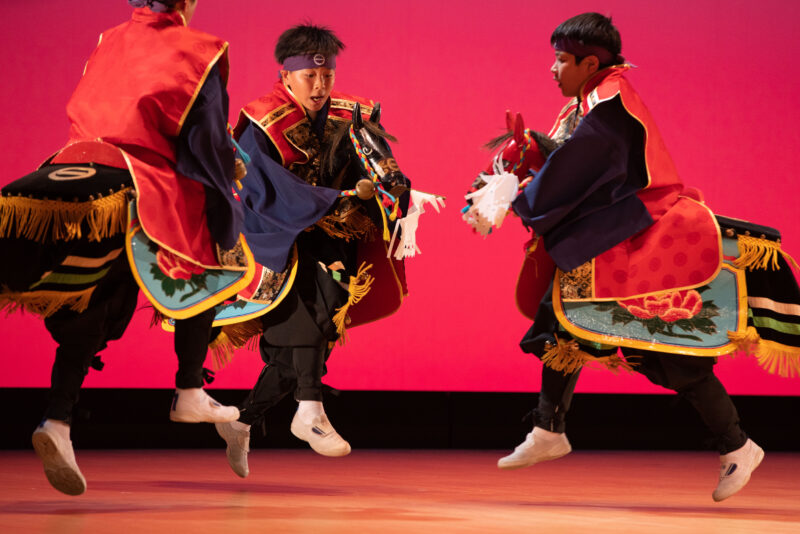
After an intermission, the latter half of the program began with the Kadonohama Komaodori. This dance has been actively taught and passed down at local elementary and junior high schools in Hirono Town, and this time, elementary school students performed. It is said that the Komaodori depicts scenes of battles during the Sengoku (Warring States) period and soothed the spirits of horses, which were important to people for battle and agriculture. The costume is tied around the waist with a decoration called koma, a wooden horse head and tail, making it look like the dancer is riding a horse. Watching the children dance, you can imagine the start of a battle on horseback, which must have been a familiar sight in the period.
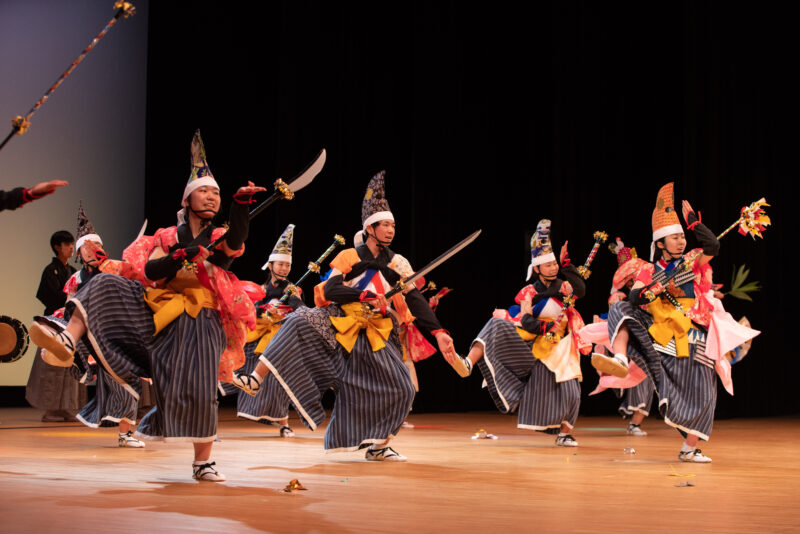
The next program was the Nakano Nanazumai, performed by the Iwaizumi High School Folk Performing Arts Club, with many members who also belong to various other clubs in the school. Since its establishment in 1990, this skillful club has had many achievements including participation in nine national competitions, three appearances at the National Theater, and a performance in Paris. They performed a dance based on the Shittogijishi Mai of the Kuromori Kagura, a traditional dance passed down in Miyako-city of Iwate Prefecture. It was named Nanazumai (Seven-heads Dance)for the dancers who form seven different groups performing seven different kinds of dance. The performance was enjoyable to watch, with different dances for each hand-held prop, including an intense dance, a light-hearted dance and a comical dance. One of the student dancers said, “When dancing Nanazumai, we pause sharply when we need to and are aware of when we’re supposed to be smooth. It makes us really happy to see people smile or feel moved.” Those words gave us the impression that they are passionate about dancing and want to continue, while balancing their studies and other club activities.
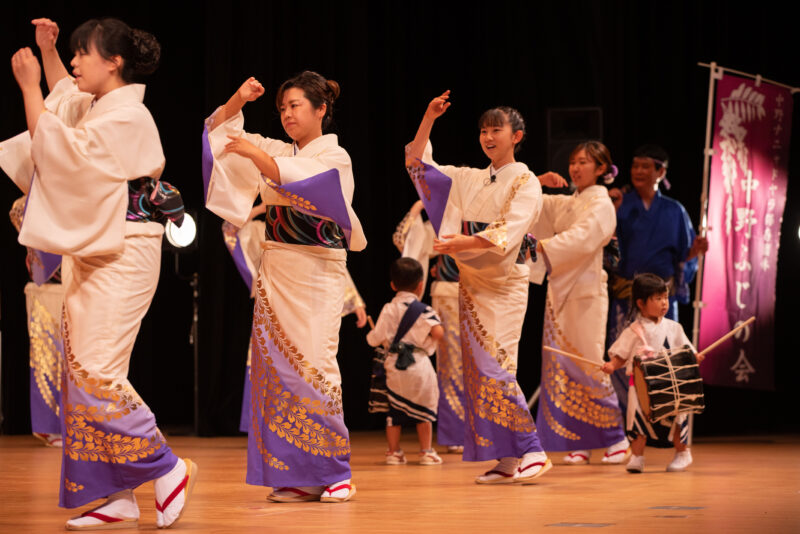
Last but not least was Nanyadoyara by Nakano Fuji no Kai, a familiar performance for the audience members from Hirono Town. Nanyadoyara is a Bondance widely practiced in Iwate, Aomori and Akita Prefectures, and is said to be the oldest of its kind in Japan. Each village has a distinctive Bon dance, and there are reportedly hundreds of variations. Nakano Fuji no Kai formed in 2014 to pass the Nanyadoyara down to the next generation, as this dance has been beloved in the Nakano area of Hirono Town for a long time. The group also engages in activities to enhance the appeal of Hirono Town.
For the finale, all five groups that had demonstrated their unique local folk performing arts, formed circles on the stage and danced the Nanyadoyara. Although the members of Nakano Fuji no Kai said they dance simply because it’s fun, the sight of everyone smiling and dancing together, transcending their differences and personalities, was more than just fun. It was a celebration in and of itself. Their smiles spread to the audience, and adults and children alike moved their hands to the rhythm of the Nanyadoyara, filling the venue with a festive spirit. In the midst of the excitement, the Sanriku Future Geinoh Festival came to a close.
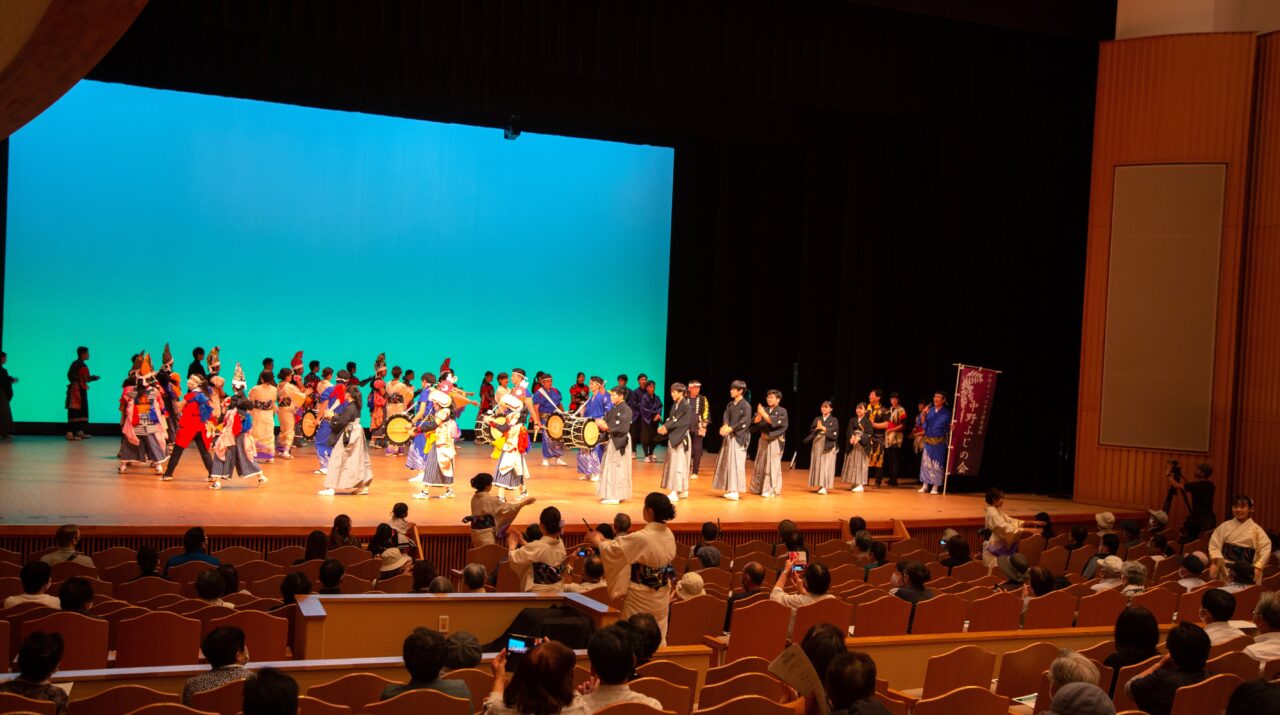
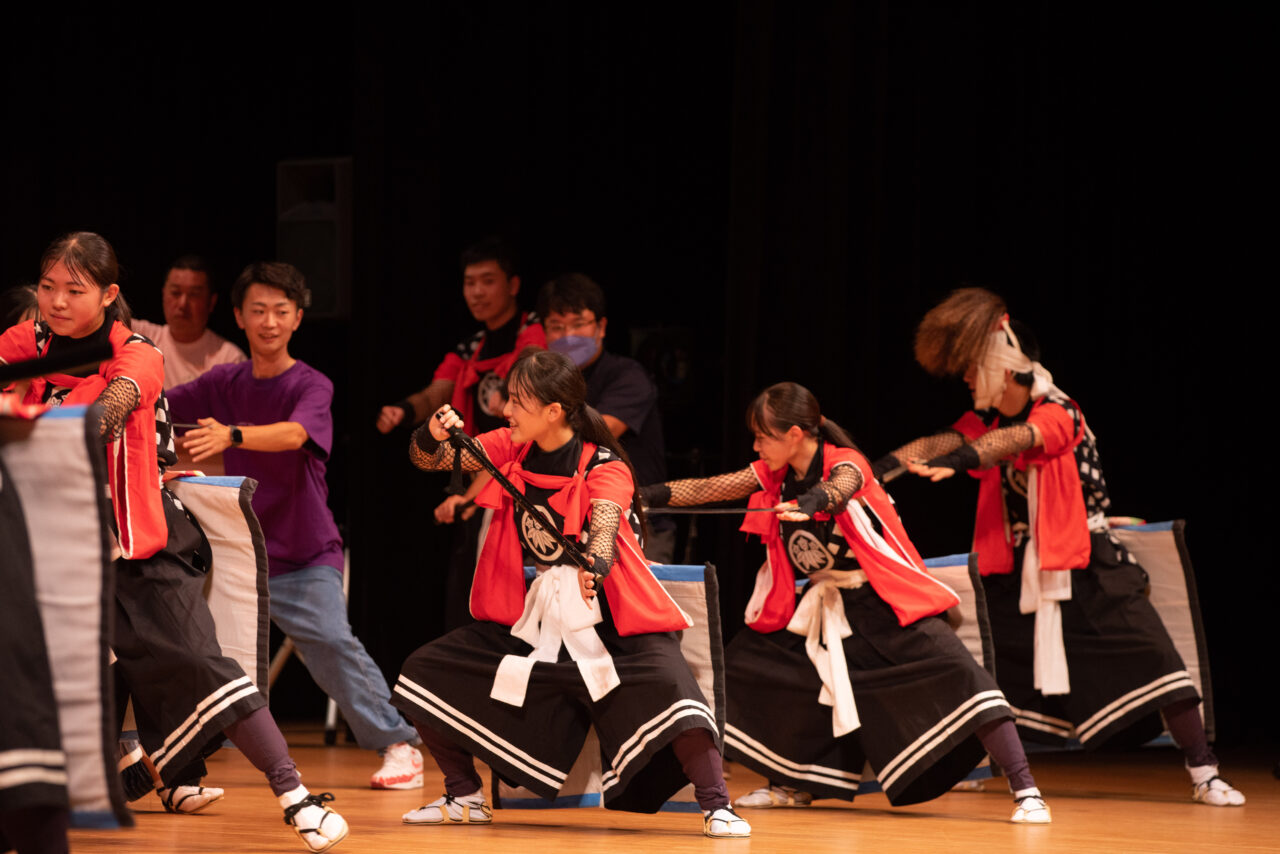
Dancing Through Hirono: Sanriku Future Geinoh Festival
Date and Time: Sunday, September 11, 2022, 13:00-15:30
Venue: Hirono Chomin Bunka Kaikan Cecilia Hall, Main Hall (Hirono Town, Iwate Prefecture)
Focusing on the young practitioners who are leading the future of Sanriku, we proposed a new kind of festival that incorporates both presentation of folk performing arts and interactive experience with them. The venue was the nature-rich town of Hirono Town, Iwate Prefecture, surrounded by the ocean (hiro) and highlands (no), as the name suggests. Three diverse and energetic groups from the Town gave performances at the festival, including the Kadonohama Komaodori, which has been passed down since the Sengoku period and is still frequently performed in local elementary and junior high schools; Nanyadoyara, which is said to be Japan’s oldest Bon dance; and a multi-generational taiko drum group with performers from 5 to 46 years old. In addition, two high school groups from the Sanriku region participated that had both won the Excellence Prize in the Local Folk Performing Arts Division at the 2022 All Japan High School Cultural Festival. The performers from Iwaizumi High School presented Nakano Nanazumai, and Kitakami Shonan High School presented Onikenbai, both representing the top-level of folk performing arts of Iwate. The performers also participated in a workshop on Onikenbai and danced Nanyadoyara together.
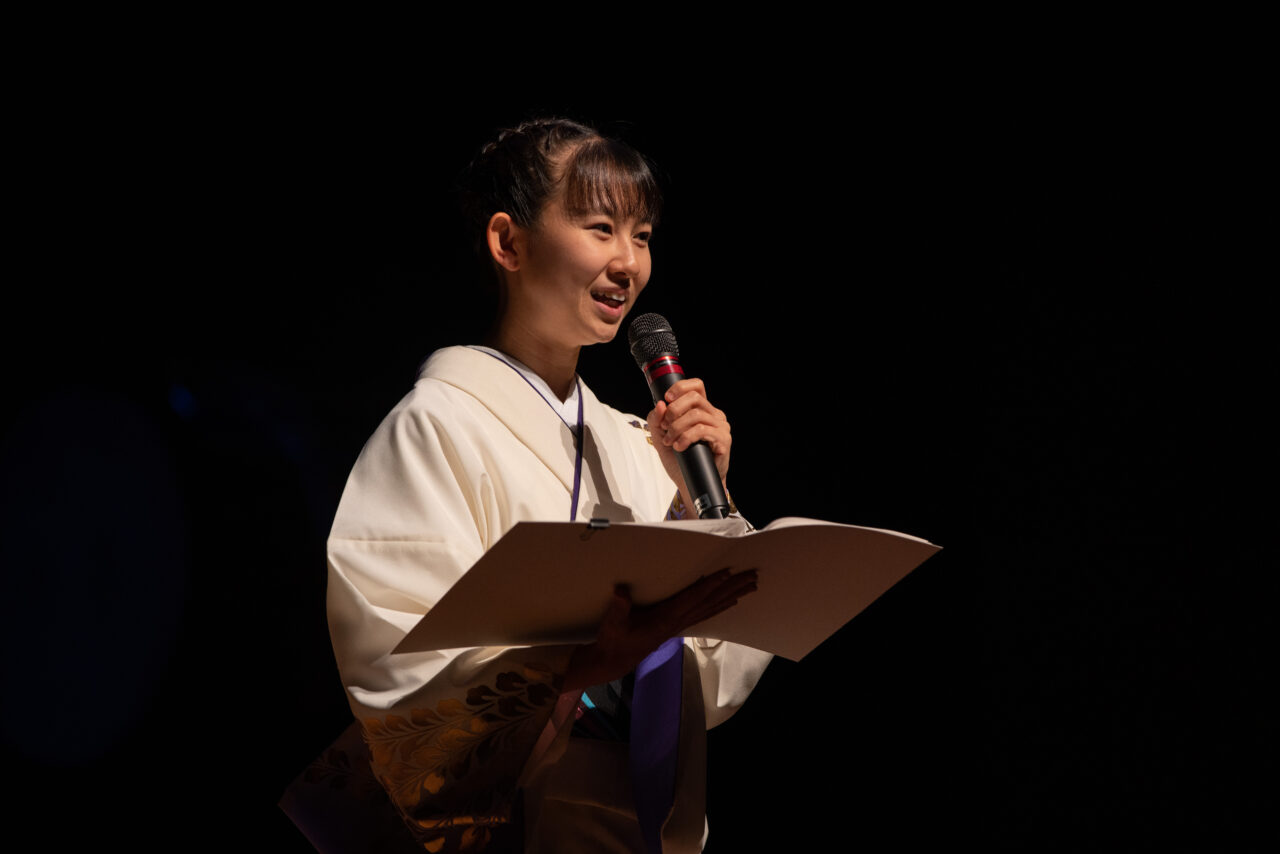
Comments from the World Taiko Conference (WTC) Members
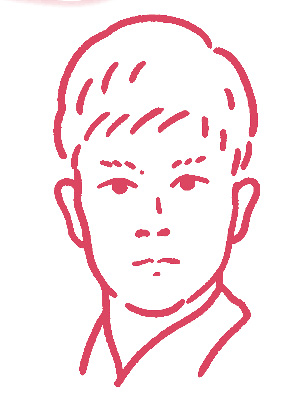
This event successfully conveyed the strengths of Japanese folk performing arts, namely harmony, togetherness, and camaraderie. Especially during the networking session, you could feel that the performers truly love what they do from the passionate manner in which they spoke and how they explained their performing arts in a way that was easy to understand. Seeing the respect between performers who are practicing different performing arts, you could appreciate the strong sense of interconnectedness among them. One of the challenges for folk performing arts groups is the lack of networking opportunities. Hopefully there will be more events like this in the future that can provide a space for interaction.

The difficulty and enjoyment of just watching and doing it yourself are completely different. When you watch them on the Internet or SNS, you feel overwhelmed by the impressive and polished appearance of their perfect dancing. But the moment the performers smile, you feel so drawn to them that you have the urge to join in. After all, smiling, making eye contact, and encouraging each other – having fun together – will surely make more people want to perform. The conference this time provided the opportunity for participants to actually try practicing performing arts that are different from their own. This was a great way to learn and gain respect for each other’s arts.
Comments by the Host Town, Hirono Town

| Head of the Lifelong Learning Section, the Education Board of Hirono Town
Mr. Hayashita, wishing the best for the future, said the following: “The future prospects of traditional folk performing arts have become somewhat limited due to the COVID-19 pandemic and the shrinking youth population. We hope that events like this which help protect a valuable cultural asset, will give us energy and allow us to expand as a group, spreading throughout the Town. The Hirono Chomin Bunka Kaikan, where this event is held, was built 22 years ago with the goal of young people’s further development and engagement with the folk performing arts and culture in the region. We hope that this goal will continue to be fulfilled, with more people living a life that embraces the folk performing arts as well as new cultures, and with the Sanriku region flourishing. That would make us very happy.”
1 Trip to Encounter Rich and Colorful Folk Performing Arts 3 days / 2 nights Sep. 23 – 25 (Fri, holiday – Sun) Route: From Tokyo to Ichinoseki to Ofunato
3 Trip to Otsuchi: Meeting the Town of Folk Performing Arts 3 days / 2 nights Oct. 14 – 16 (Fri – Sun) Route: From Tokyo to Morioka to Otsuchi to Morioka to Tokyo